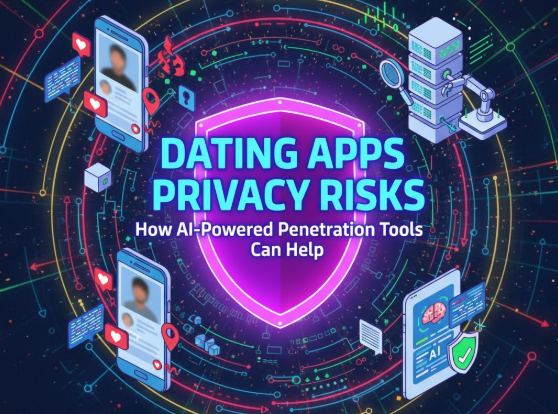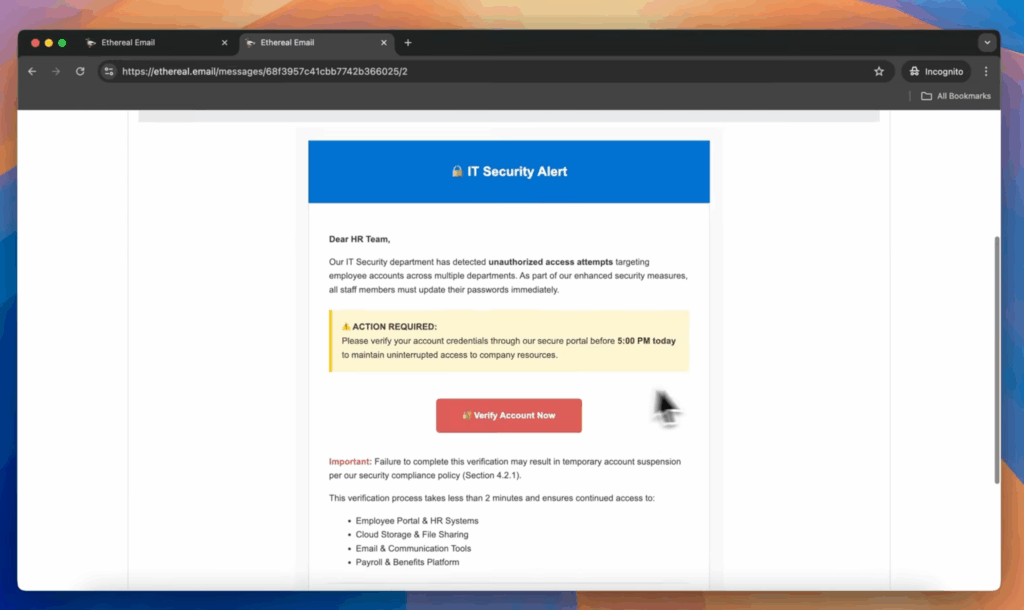데이트 앱이 고위험 플랫폼인 이유
최근 몇 년 동안 온라인 데이트는 틈새 활동에서 현대 사회 생활의 일상적인 일부로 발전했으며, 연구에 따르면 3명 중 1명이 잠재적인 파트너를 만나기 위해 데이트 앱을 사용한다고 합니다. 그러나 이러한 편리함과 문화적 보편성에도 불구하고 이러한 플랫폼의 사이버 보안 태세는 여전히 우려할 정도로 취약합니다. 비즈니스 디지털 인덱스의 최신 보고서에 따르면, 가장 널리 사용되는 데이트 앱 중 75%가 여전히 기본적인 보안 기준을 충족하지 못해 성적 취향과 개인 사진부터 정확한 GPS 위치, 비공개 채팅 기록, 심지어 결제 카드 데이터에 이르기까지 수백만 명의 사용자의 가장 내밀한 정보가 심각한 위험에 노출되어 있는 것으로 나타났습니다.
이는 이론적인 우려와는 거리가 멀다. 이 분야의 보안 실패가 얼마나 큰 피해를 가져올 수 있는지 역사는 반복적으로 증명해 왔습니다. 2015년에는 3,000만 명의 개인정보가 유출되어 이혼, 협박 시도 및 여러 건의 자살 사례가 확인된 Ashley Madison 유출 사고가 발생했습니다. 1년 후 AdultFriendFinder는 노골적인 성적 취향 데이터를 포함한 4억 건의 기록이 온라인에 유출되는 사상 최대 규모의 보안 침해 사고를 겪었습니다. 그리고 2020년에는 ShinyHunters 그룹이 Zoosk를 해킹하여 소득, 생년월일, 정치적 견해 등 매우 개인적인 정보가 포함된 2,400만 개의 기록이 도난당했습니다.
이러한 사건들을 종합해 보면, 데이트 앱은 사이버 범죄자들의 주요 표적이 되고 있으며, 보안에 실패할 경우 그 결과는 디지털 영역을 넘어 사용자의 실생활에 지속적인 피해를 입히는 등 지극히 개인적인 문제로까지 확대될 수 있습니다.

데이트 앱 취약점 분석
| 카테고리 | 특정 취약점 | 영향의 예 |
|---|---|---|
| 외부 | 취약한 이메일 인증(SPF, DMARC, DKIM 누락) | 피싱 및 브랜드 스푸핑 캠페인 지원 |
| 패치되지 않은 소프트웨어 취약점 | 원격 코드 실행, 손쉬운 익스플로잇 허용 | |
| 취약한 TLS/암호화 구성 | MITM 공격 및 데이터 가로채기 촉진 | |
| 내부 | 신원 연결 데이터(직장, 학교 이름) 유출 | 사회 공학, 표적 괴롭힘 |
| 데이터 전송 중 SSL/TLS 부족 | 데이터 가로채기 및 조작 | |
| 인증서 유효성 검사 실패 | MITM 공격에 취약함 | |
| 부실한 토큰 관리 | 메시지 및 사진에 대한 무단 액세스 |
데이트 앱에 대한 침투 테스트 - 펜리전트 사용 사례 피싱 시뮬레이션
보안 연구원과 모의 침투 테스터에게 데이팅 앱의 복원력을 평가하려면 일반적인 취약점 스캔 이상의 것이 필요하며, 소셜 엔지니어링이 인간의 신뢰를 악용하는 방법에 대한 깊은 이해와 표적화된 기술 조사를 결합한 다층적인 접근 방식이 필요합니다. 공격자는 위치 기반 매칭, 프로필 메타데이터, 인앱 메시징과 같은 데이팅 에코시스템 고유의 기능을 활용하여 피싱, 감시 또는 데이터 유출 캠페인을 실행하는 경우가 많습니다.
데이터 유출을 위한 API 퍼징
모바일 및 웹 API 엔드포인트에 대해 구조화된 퍼징을 수행하여 취약한 입력 유효성 검사, 불완전한 액세스 제어 또는 개인 또는 위치 데이터를 유출할 수 있는 잘못 구성된 응답 헤더를 식별합니다.
프로필, 메시징 및 지리적 위치 서비스와 관련된 엔드포인트는 중요한 개인정보 데이터를 보유하는 경우가 많으므로 타겟팅하세요.
# 예제: API 퍼징에 OWASP ZAP 사용하기
zap-cli 시작
zap-cli open-url
zap-cli fuzz --컨텍스트 "DatingAppAPI" --페이로드 페이로드/location-data.txt
zap-cli report --output report_api_fuzz.html
zap-cli stop
로맨스 사기를 방지하는 이메일 인증 감사
확인 또는 일치 알림을 보내는 데 사용되는 도메인에 대한 SPF, DKIM 및 DMARC 구성을 검사합니다.
기록이 약하거나 없는 경우 공격자는 데이트 앱 이메일을 스푸핑하여 사용자를 피싱 페이지로 유인할 수 있습니다.
# SPF, DKIM, DMARC 기록 확인
dig datingapp.com TXT | grep spf
dig datingapp.com TXT | grep dmarc
# 다음을 사용하여 DKIM 확인
opendkim-testkey -d datingapp.com -s default -k /etc/opendkim/keys/default.txt
TLS 구성 및 MITM 공격 방지
TLS/SSL 구현의 강도를 테스트하고 모바일 앱이 인증서 고정을 적용하는지 확인하세요.
오래된 암호 제품군이나 고정이 누락된 경우 비공개 채팅이나 위치 업데이트를 가로챌 수 있습니다.
# 예제: SSLyze 사용
sslyze --regular datingapp.com
# 모바일 앱 TLS 고정 확인
frida -U -f com.datingapp.mobile --no-pause -l check_tls_pinning.js
토큰 및 미디어에 대한 저장소 감사 및 액세스 제어
인증 토큰, 비공개 사진, 채팅 기록이 디바이스와 백엔드 시스템에 어떻게 저장되는지 살펴보세요.
토큰이 미사용 시 암호화되고, 접근이 통제되며, API 응답이나 로그에 직접 포함되지 않도록 합니다.
펜리전트는 무엇을 할 수 있나요?
- 자연어 인터페이스: "이 데이트 앱 로그인 시스템에서 피싱 시뮬레이션"을 입력하기만 하면 Penligent가 올바른 도구로 실행됩니다.
- 현실적인 피싱 시뮬레이션: 미끼 메시지부터 인증정보 탈취까지 데이트 앱 사용자를 노리는 피싱 체인을 재현할 수 있습니다.
- 자동화된 검증 및 우선순위 지정: 실제 위험과 오탐을 구분합니다.
- 즉각적인 보고 및 팀 협업: 실시간 분석가 협업을 통한 PDF/HTML 보고서 생성.

데이트 앱 사용자를 위한 개인 안전 수칙
데이팅 앱에서 개인 정보를 보호하는 데 있어 사전 예방적 조치는 상당한 차이를 만들어냅니다. 사용자는 전용 이메일 주소로 등록하고 강력하고 고유한 비밀번호를 사용해 인증정보 재사용을 방지해야 합니다. 정확한 위치 공유를 비활성화하면 스토킹의 위협을 크게 줄일 수 있으며, 소셜 계정 로그인을 사용하지 않으면 유출 시 플랫폼 간 노출 가능성을 최소화할 수 있습니다. 마지막으로, 공개 프로필에서 직장이나 학교 정보를 생략하면 표적 괴롭힘이나 신원 추적을 방지하는 데 도움이 될 수 있습니다.



